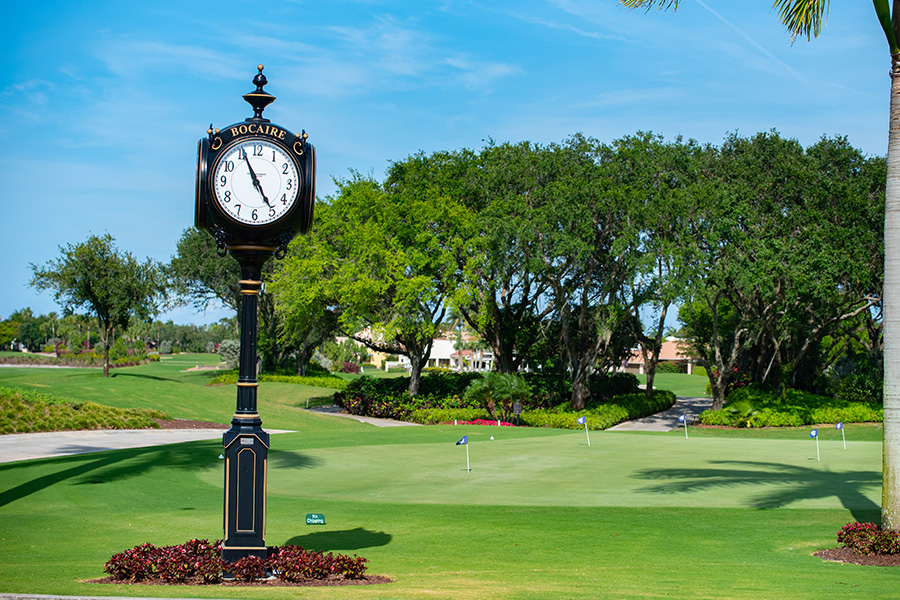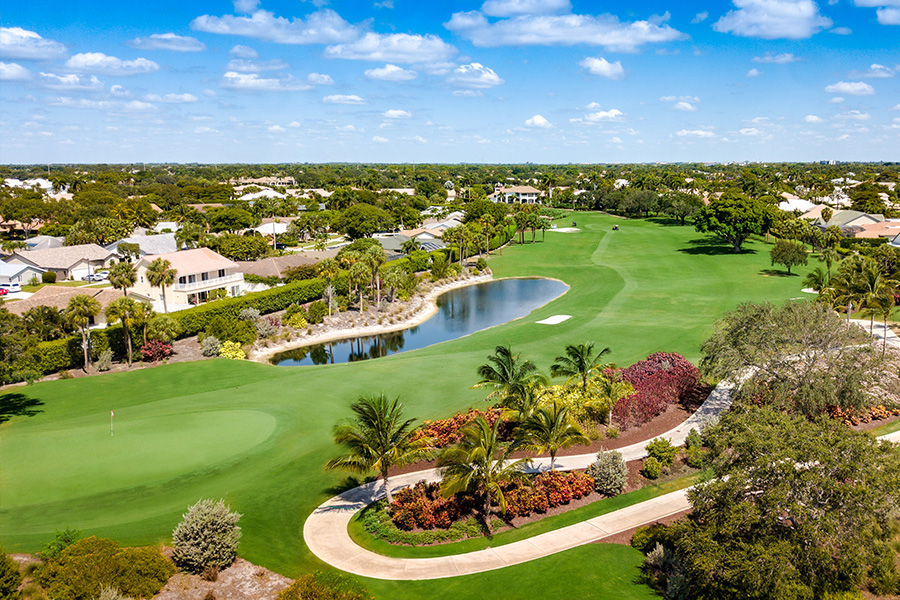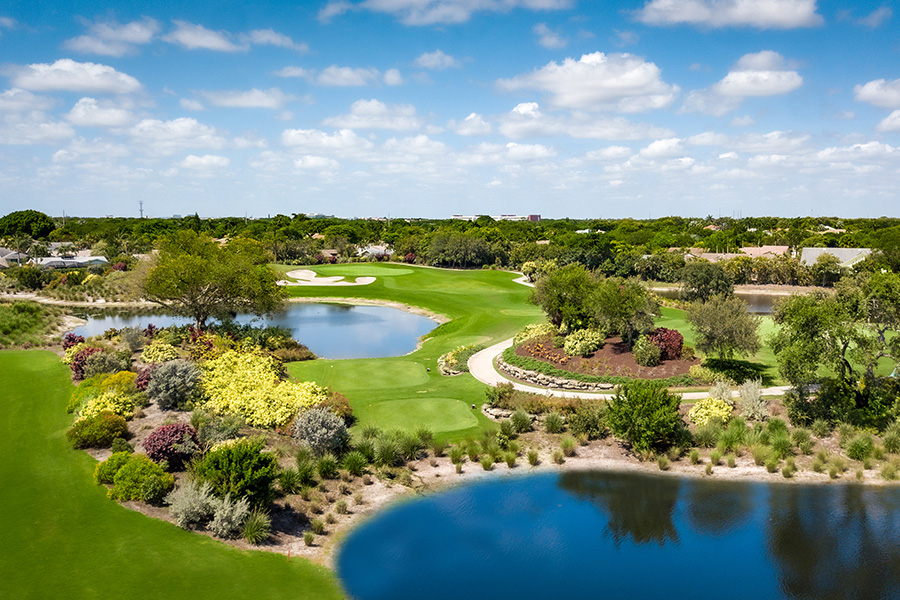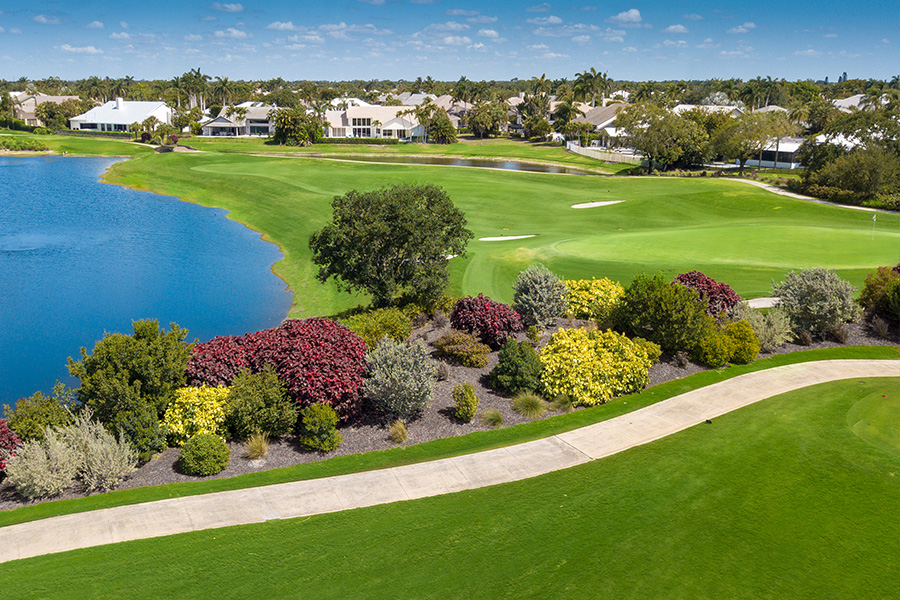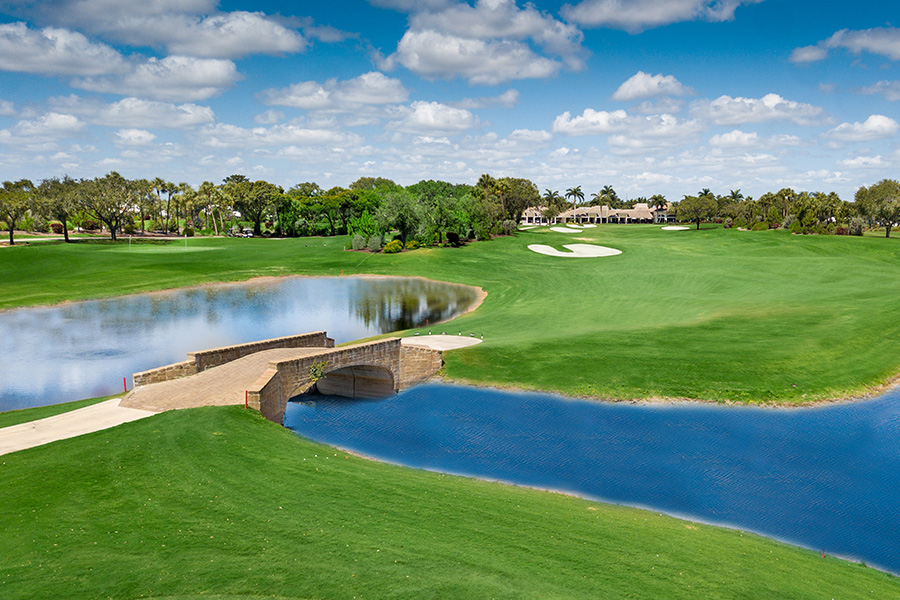The Challenge
The Challenge at Bocaire, the country club’s golf course, and practice facilities have been completely rebuilt and officially opened in January of 2019. The $8 million dollar rebuild included changes to every single hole, as well as structural considerations for players of all levels and enhancement of the course aesthetics. This course is like nothing you’ve seen or played in South Florida and after moving over 325,000 cubic feet of dirt–what’s been created is nothing short of a masterpiece.
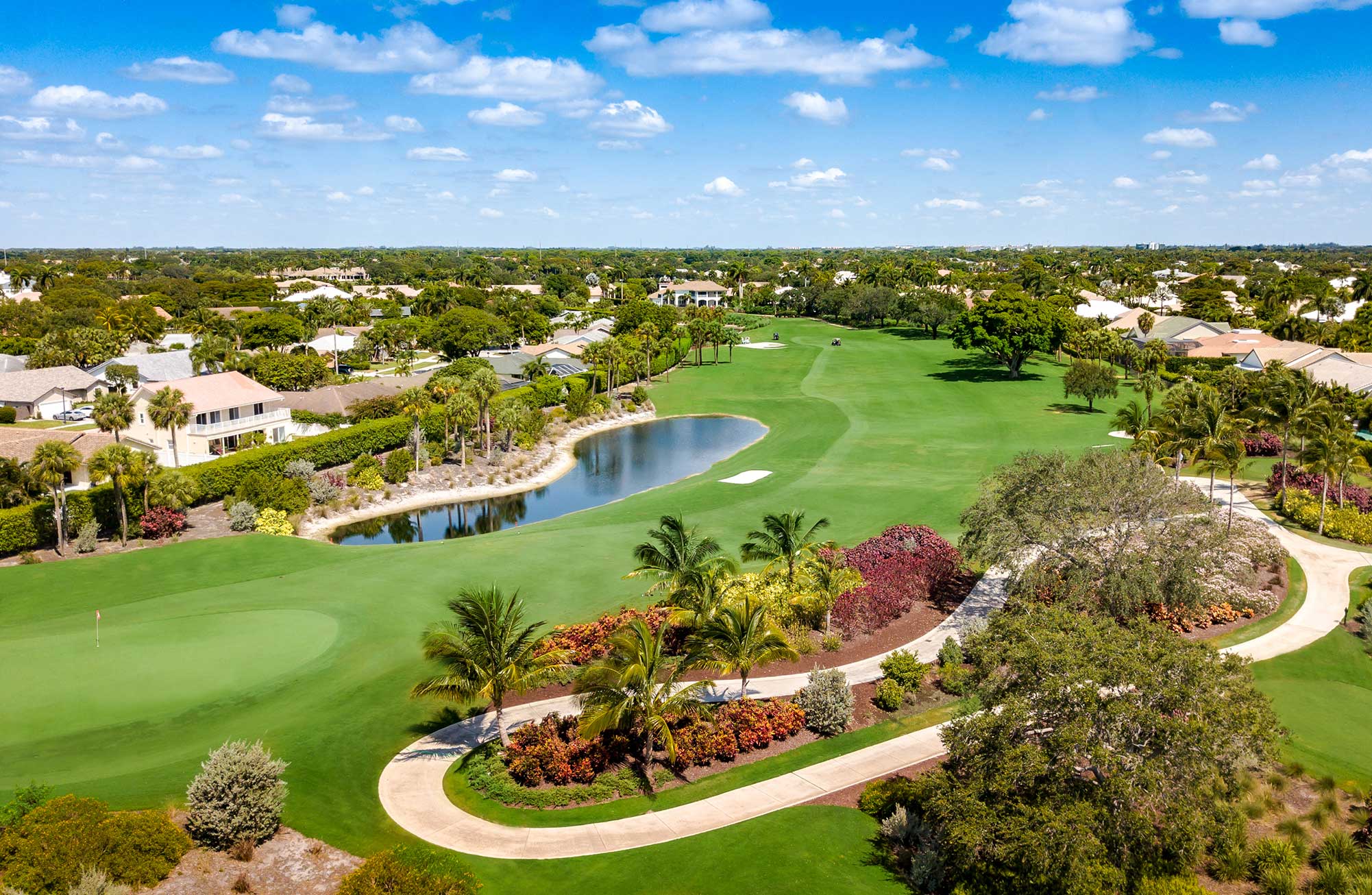
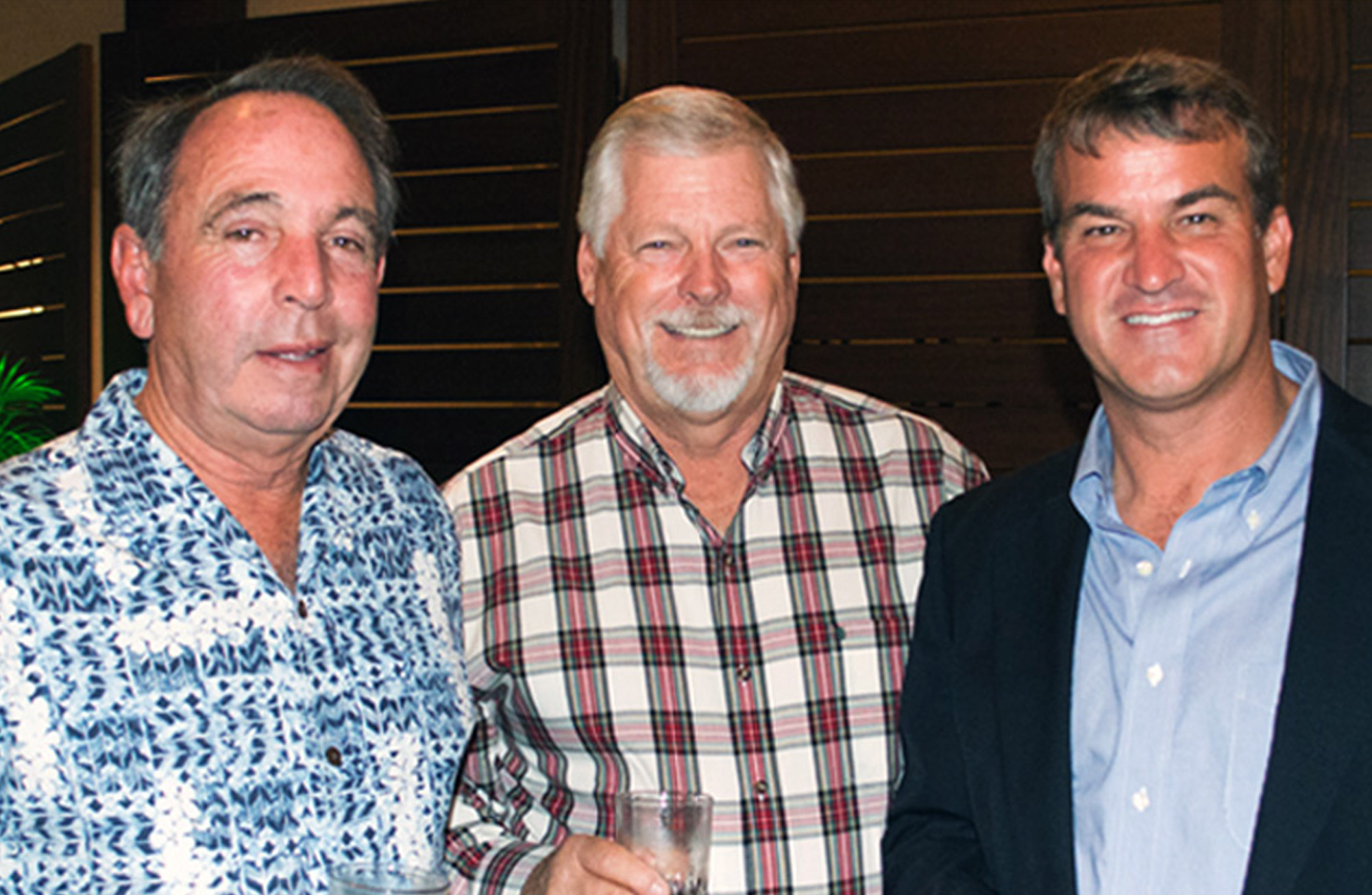
Something for everyone
Designed by South Florida’s hottest Golf Course Designer, Kipp Schulties, The Challenge offers several holes that live up to its name. A course that was once relatively flat now features mounding on the peripheries and undulation in the fairways, changes in elevation that are a rarity in South Florida. Several new lakes were developed and the course has been lengthened to over 7,000 yards from the back tees. Schulties’ design also included planting thousands of beautiful bougainvillea, oleanders, and stadium-like greens to make the backdrop rich and lush.
The Challenge at Bocaire possesses several attributes unique to the area. The course is the only one in South Florida to feature TifGrand fairways, a vibrant green grass that lets the ball sit up nicely. The tee box on the par-three 3rd hole boasts the highest elevation point in the area. For the redevelopment, the club also invested in other configurations that make the course challenging for avid golfers. Additionally, the course contains 7 sets of tees, making it playable for golfers of all levels.
A particularly special element of The Challenge is the completely open access policy that makes it, by design, a golfers paradise.
Of the complete rebuild, designer Kipp Schulties said, “Normally you’re pretty landlocked in this area, but we had the ability to make elevation changes and add contour…Literally, everything is brand new on the course…as a result, they now have one of the best courses in Southeast Florida.”
Additionally, The Challenge at Bocaire has a unique, world-class practice facility that is second to none. The facility offers players the opportunity to actually hit to greens, many fronted by rock bunkers to help zero in on distance and accuracy. There is a separate short-game area with multiple greens that give players an accurate idea of what to expect on the course. And with an additional large practice putting green, the facility truly lacks nothing. All of this plus lovely, vibrant fairways, dramatic elevation changes, and lush landscaping. The practice facility is aligned with a club that prides itself on uncompromising amenities and service.

Hole 1
One of the few holes without a target bunker in the landing area, the objective is to stay on the ‘top shelf’ right of the fairway for an elevated approach into the green without carrying the greenside bunker. A slight miss left leaves you in a deep undulating low area with the greenside bunker to contend with. Hit it perfect and you may find the ‘speed slot’ for a quick up and down on a green that lends itself to birdie putts. Hole number one should be one of the easier holes on the course.

Hole 2
The shortest par five on the course, this hole is a true ‘risk-reward’ play. With a generous landing area, the goal off the tee box is simply to avoid the crossing bunker on the right. By challenging the bunker off the tee box you will find the path to reaching the green much easier. Bailing out left may require more attention to carrying the water with the second shot. Although length may not be a problem reaching the green in two shots for longer hitters, one must be extremely accurate in landing the ball on the elevated and crowned green guarded by waterfront left and rock outcropping behind the green. Miss it short and you may be lucky enough to find yourself in one of the deep pockets of shaping which requires a skillful short game player to get up and down. With multiple false fronts guarding this green…hole number two will suggest you spend time hitting wedges at the practice range and short-game area.

Hole 3
As one of the highest elevations in Boca Raton, this is a true downhill shot and is simply dramatic. With the rock wall defining the water hazard, your only mindset should be to not miss it left. Once you have calculated your club selection you will see there is plenty of bail out right to which leaves you with two choices; either fire at the pin with your best shot or let the contours feed you in from the right. With the addition of the largest ‘serpentine’ bunker on the course hugging the left side of the green, the back left side will be the ultimate ‘Sunday Pin’

Hole 4
After playing the shortest par five on the course you now play the longest….and possibly the longest in the county. The elevated tees help you navigate through the shot process from the start. Bunkers left of the first landing area help guard from taking the shortest route when playing from the tips. The wide fairway allows you to confidently hit your drive to prepare for the second shot. The second shot welcomes a lay up without much trouble, but in return will serve you a very long approach shot into a short-sided green with little run up. Hit it long enough on the second shot and you will find a speed slot to gain a little more distance. Hit two good shots from the tee and the approach should be rewarding.

Hole 5
Framed out with oak trees, the fairway splits with a tiny bunker in the middle. Not a very long hole but precision is key with the approach to the green. While the greenside bunkers are appealing to look at you want to avoid them at all costs. The real trick is to manage the different levels on the green…just a few yards off from the pin may require one of the longer putts on the course.

Hole 6
”Straight to the point”. Hole six is a straight hole with the green slightly sticking out on a point. You can just see the water off the tee box…..the addition of the bunker on the left side of the landing area keeps longer hitters honest as it squeezes down the fairway adjacent to the water. Right right side showcases a dense forest of landscaping framing out the hole. With a proper tee shot one could run the ball up on the front of the green or fly over the water and bunker to a back pin. The green has subtle contours primed for a birdie putt.

Hole 7
Having just played a downhill hole, number seven is just the opposite. Carrying the water from the back two tees is not difficult…nor is finding the bunkers in the landing area. The series of three bunkers protects the best angle into the green, but also provides a shelf for anyone to challenges them and succeeds. If you are good enough to carry the bunkers you will have the length of the green to work with, but most importantly you are on a similar elevation to have full visibility of the green with your approach. If you play it safe and hit to the middle and left of the landing area you will stare up to a perched green with deep bunkers on the low side to carry. This is a sneaky hole that looks easy but may test your game tee to green.

Hole 8
A completely new hole from tee to green, this par three is a mid-iron play to a large green…easy right? After you absorb the beauty of the rock wall, landscape color draping the backdrop and backside bunkers framing the hole you may forget about the task of missing the water left. There is a ridge in the green that will determine how close you are to the pin. A classic look for a par three.

Hole 9
The idea is to hit it as close to the bunkers in the landing area as possible, without going in them of course. This not only sets you up with the best approach angle into the green, but avoids falling down into the deep low area created by a split fairway. The low area left of the hole makes you contest your next shot over a newly introduced lake and over the green side bunkers. However, with bailout to the right you can easily go long and play safe or test your accuracy. The hole is framed out with old oak trees and complementing landscape.

Hole 10
This dogleg right par five can be played many ways. To take the short cut right from the start may require the best drive of the day. There is a massive bunker and stand-alone oak tree guarding the inside of the dogleg…while the better play may be to hit it out toward the oaks lining the left side of the fairway. Assuming you find a flat lie, you may be tempted to get close to the green on the second shot…but will find a narrow approach zone squeezed between bunkers left and water right. If you are good enough to carry them both you are still faced with an awkward lie as the contours will not allow a straight forward chip from 50 yards in to the green. If you lay-up you will find a much softer resting spot but will have to plead with your wedge to find one of your best shots of the day to get it close. One of the most interesting greens on the course…there is a top and bottom shelf that can provide an easy birdie putt or a three-putt depending if you hit the target.

Hole 11
A true drivable par four, this hole is one of the best! With the largest visual scale from left to right and numerous tee locations throughout, it is too enticing to not lay it on the line and go for it. Peppered by a variety of bunkers and dramatic undulating surroundings near the small green if you are lucky enough to hit the green you should have an automatic birdie. However, this green is the smallest on the course, elevated, and promotes a false front to do one simple thing…protect. The water hazard is waiting on each side of the fairway for errant drivers so a more conventional ‘layup’ approach off the tee may be the way to go….but what fun is that.

Hole 12
An uphill par three using a mid-iron to a green protected by a daunting bunker on the left. While the green does not sit on the water like the previous par threes, you still get the sensation of carrying a water hazard for the first 100 yards. The hole is unique in that the tee boxes sit in a valley with landscaped ridges and rock outcroppings to the side…keeping your focus on the target.

Hole 13
Now it gets difficult; the next two holes are perceived to be two of the toughest holes back to back. Particularly, this hole requires a precise drive from the back two tees….as they fire through a ‘shoot’ over water. The next few tees adjust around the forced carry, but the tee shot is still demanding as water follows the length of the hole on the left side. The bunkers in the foreground are mainly eye candy for most drivers of the ball…but could come into play on approach shots. The large green is tucked in a stadium of contoured landscape. The green contours itself can be deceiving as there are many subtle breaks front to back.

Hole 14
This difficult par four is over 450 yards from the tips and has little room for error. If you find your ball in the large bunker on the right side of the landing area you most certainly are laying up. The hole is a narrow-vegetated corridor with a small pond near the approach. The green does not sit on the water’s edge but is protected by bunkers left and back. The green has some wicked contouring near the front and will require a ton of focus when putting.

Hole 15
It’s birdie time! With a mild carry for the back tees over water you simply must hit anything from a two iron to a driver in play. There is a small bunker on the right side of the fairway but should not be too difficult to miss. This short par four is all about the approach shot to the green. The green is a modified biarritz style green featuring a deep gully, or swale, bisecting the middle. One must be accurate to keep the ball near one of the three levels…the middle being the easiest to access.

Hole 16
The next three holes finish par three, five, and four. This final par three plays long to a protected green with a series of bunkers, the small canal of water guards the errant shot left. If you miss right, you are short-sided. There is not an ideal bail out so you have one option…. hit the green and make a putt.

Hole 17
This par five capes around a lake from the back tee, aims towards a large bunker, and deserves a great drive. As you play the hole the fairway contours become more undulating, so your second shot placement is critical. There is a bunker splitting the second landing area with a perched approach to the right…miss left with your second shot and you may find yourself hitting around or over the lonely oak tree. The green lays in the ground surrounded by mounding….and half-hidden on the left side, thus the strategy is to stay toward the right side. If you play outright you will see the entire green on the approach but are hitting down to the green which can be tricky. You can approach this green with a variety of shots from the bump and run to the flop. If you are unlucky and hang your second shot out left, you may be blind to the pin.

Hole 18
Finally, and good luck! The longest par four on the course and straight away. The longest forced carry over water with bunkers protecting the left side all the way to the green. The golf hole promotes ultimate containment from both sides and rolls like a roller coaster. At the green you start to elevate back up to a plateau setting. A beautiful oak tree guards the short right side of the green with a bunker tucked right underneath. You can not miss right or your chance of making par becomes slim. Bunkers guard the left side of the green and begs for a fade approach. The green is long front to back, so a lag putt will be crucial. If you finish with a par you deserve a pat on the back…but most likely a drink.

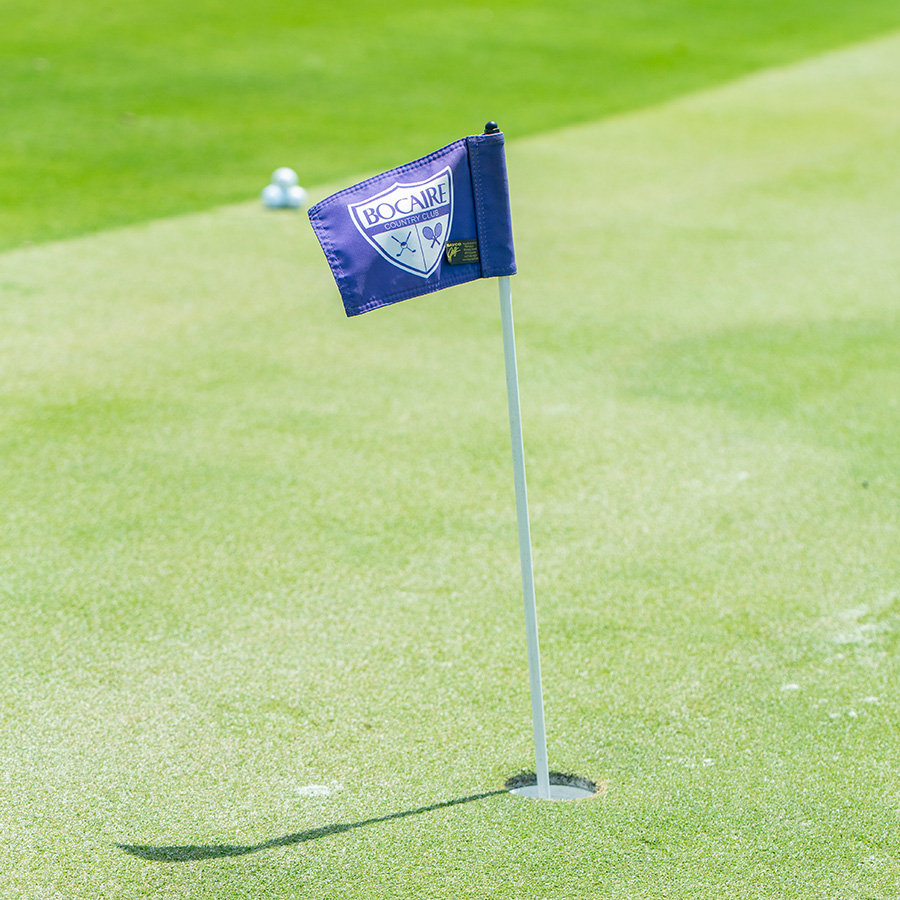

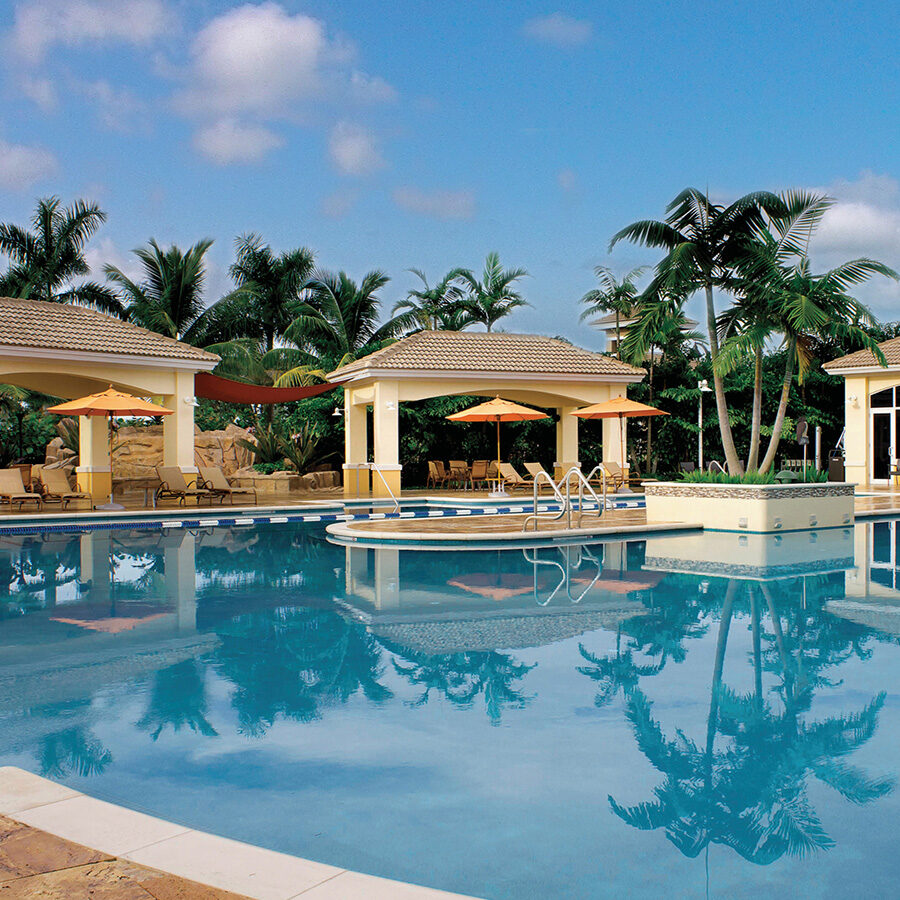

READY TO FIND OUT MORE?

